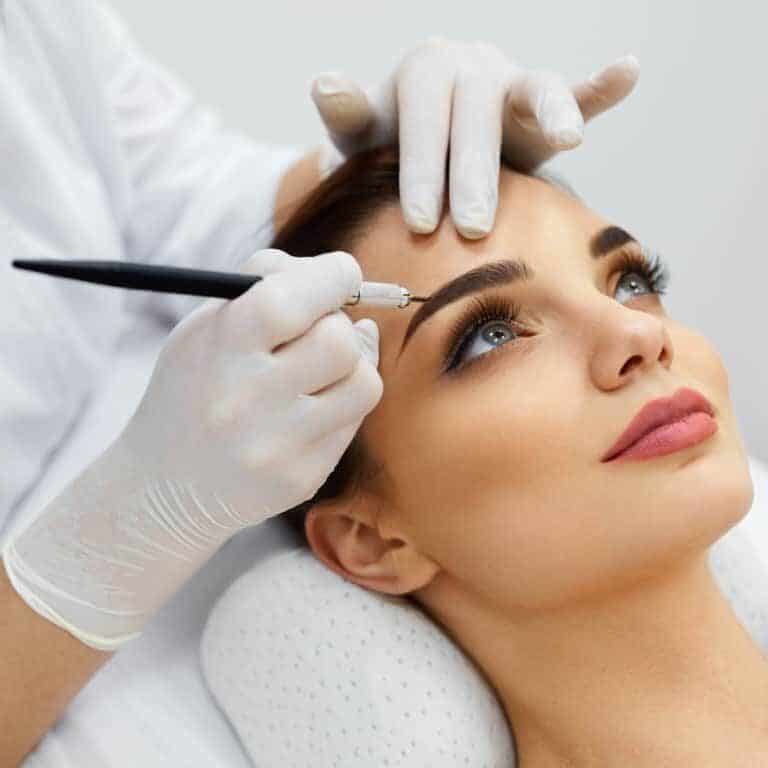
While makeup can do wonders for the self-esteem of its users, there’s no denying that applying it takes money from your pockets and precious time out of your day, every day.
As such, more and more people are turning to cosmetic tattoos as a time and cost-effective alternative to makeup, even in some cases as a part of medical recovery.
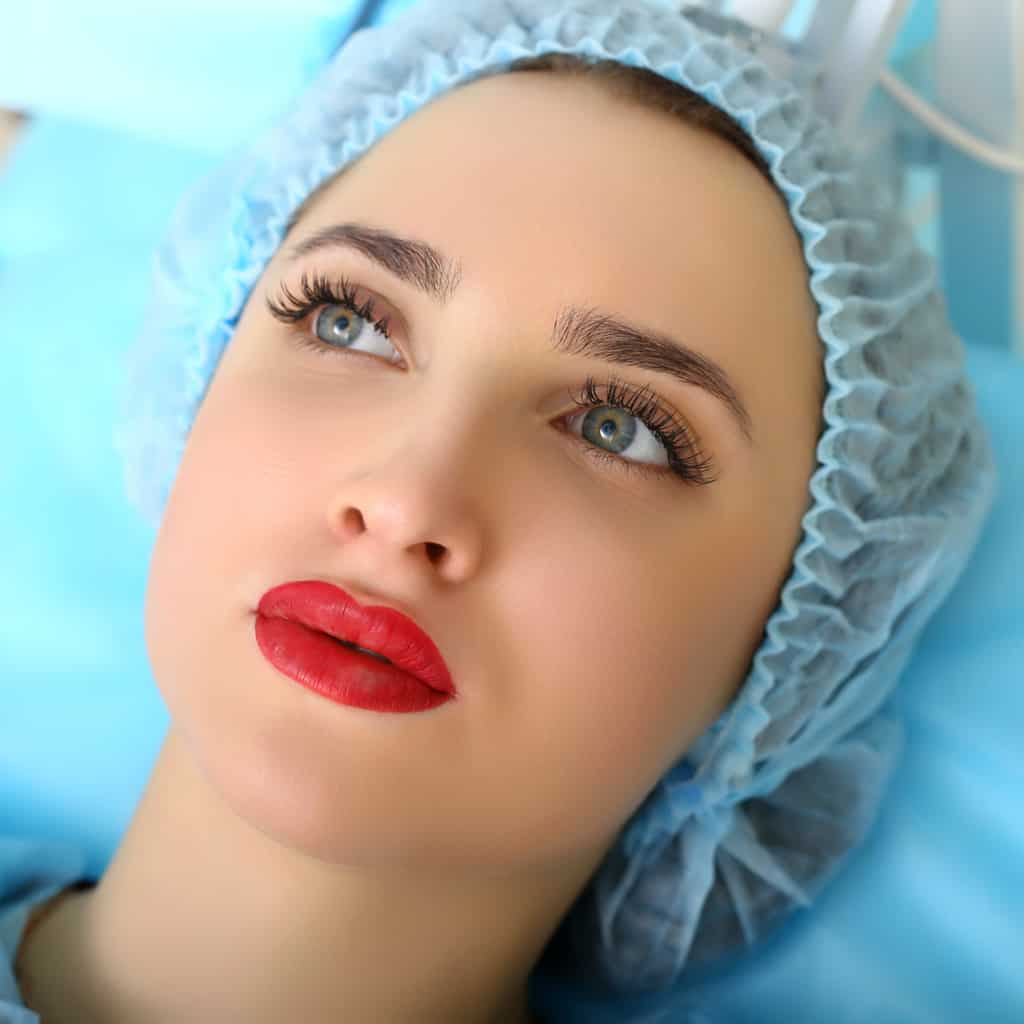
But how are cosmetic tattoos any different from traditional tattoos? And what makes them an increasingly popular trend? Without further ado, here’s what you should know about cosmetic tattoos:
What are Cosmetic Tattoos?

Also known as permanent makeup or micropigmentation, this is a cosmetic technique where a technician or tattooist utilizes tattoos to enhance features such as eyelids, eyebrows, lips, etc.
They’ve Been Around Since Ancient Times
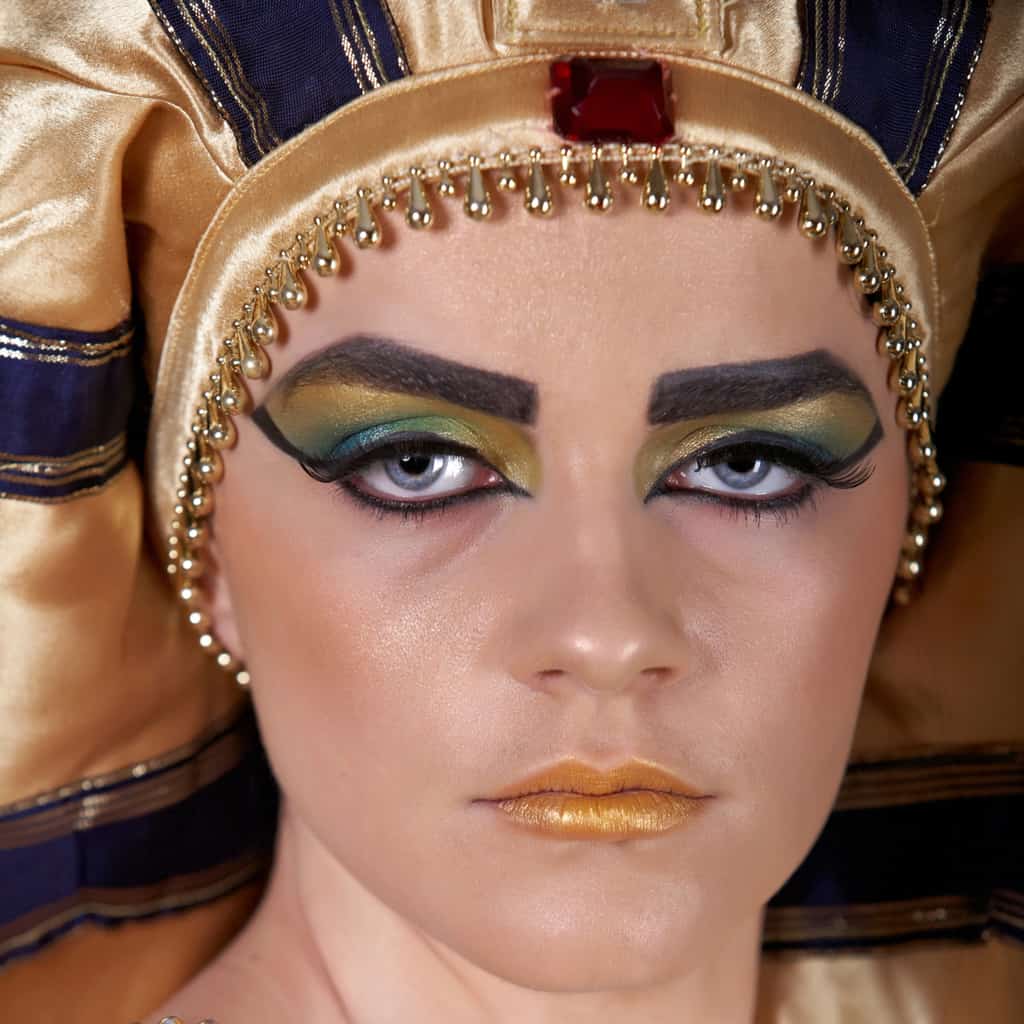
Cosmetic tattoos have been around for as long as traditional tattoos have. Many ancient cultures are known to have practiced facial tattooing, from Egypt to the Cree in Native America.
By the 90’s and early 00’s it was apparent cosmetic tattoos were becoming increasingly popular. However, they still had a long way to go before achieving the natural look that’s so sought after today.
The Difference between Cosmetic and Traditional Tattoos
In most cases, cosmetic tattoos find their placement on the most sensitive area of the skin: the face. Consequently cosmetic tattoos can’t be performed with traditional tattooing equipment, since doing so would certainly result in great physical damage to the client.

Conversely, digital cosmetic tattoo machines work more gently than traditional rotary and coil machines by only penetrating the most superficial layers of the skin.
Needles of a small diameter (0.30mm, for instance) trace over the eyebrow to create fine details that resemble hair. These smaller-sized devices allow more mobility and facilitate working on reduced areas while also decreasing the amount of pain experienced.
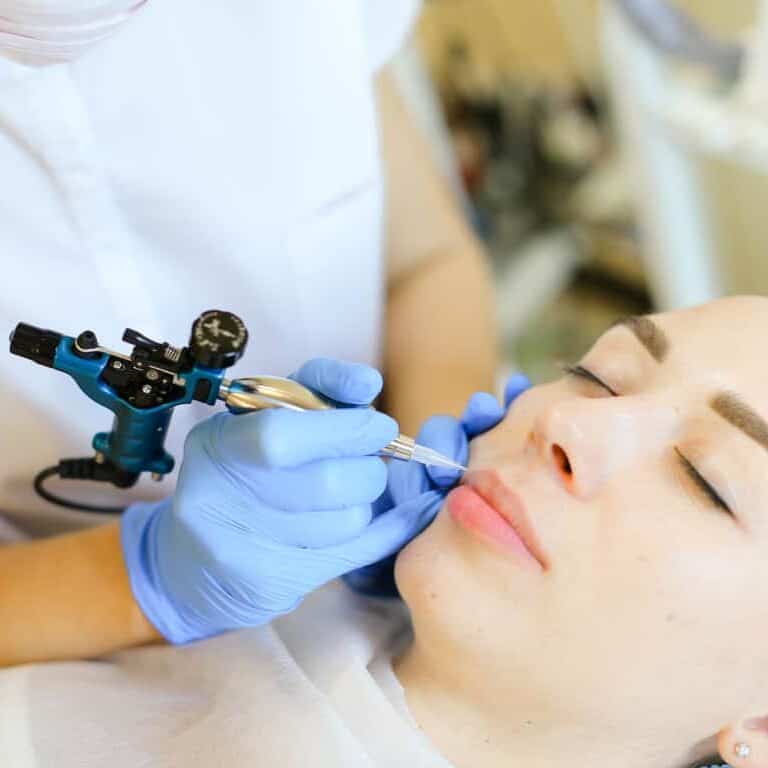
Moreover, the pigments used in ink are also different. The smaller and less concentrated pigments of cosmetic tattoo ink will fade away every couple of years. But why not go with permanent ink instead? In short terms, it has to do with aging.
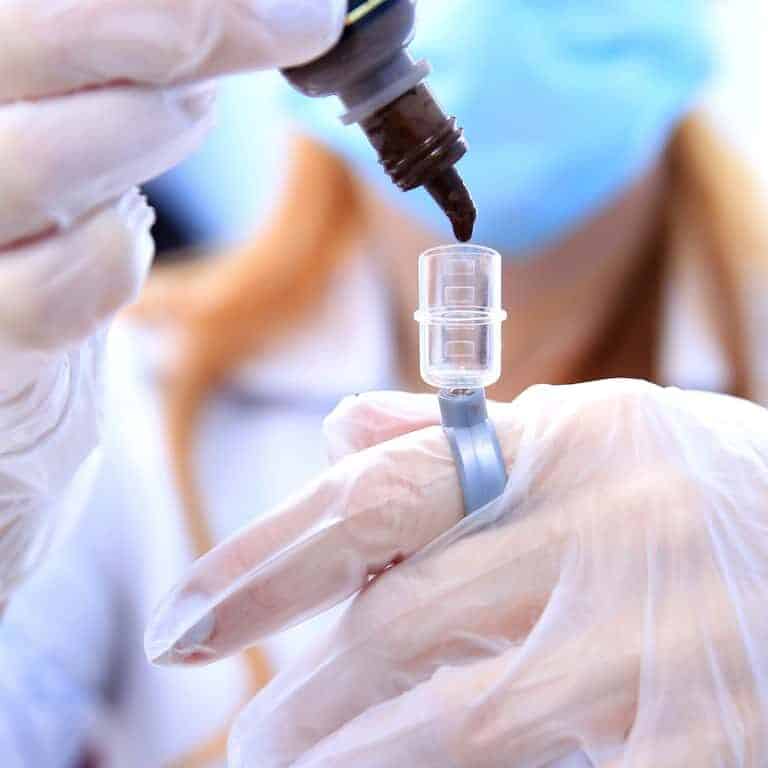
As time goes on and facial skin’s natural oils are depleted, thus losing elasticity, the skin begins to sag. If someone were to tattoo their eyebrows with permanent ink, the design would inevitably move from its original placement after some years.
Semi-permanent ink, however, will allow the tattooist to adapt the design over time to the client’s naturally changing features.
Do Cosmetic Tattooists Require A License?
Regulation on cosmetic tattoos greatly varies depending on the geographical region. In countries like the U.S., for instance, specific training is not required in all states, although it is encouraged in all instances.

Just like with traditional tattoos, cosmetic tattoo technicians are required to obtain training on safety, first aid and bloodborne pathogens, as well as completing an apprenticeship program.
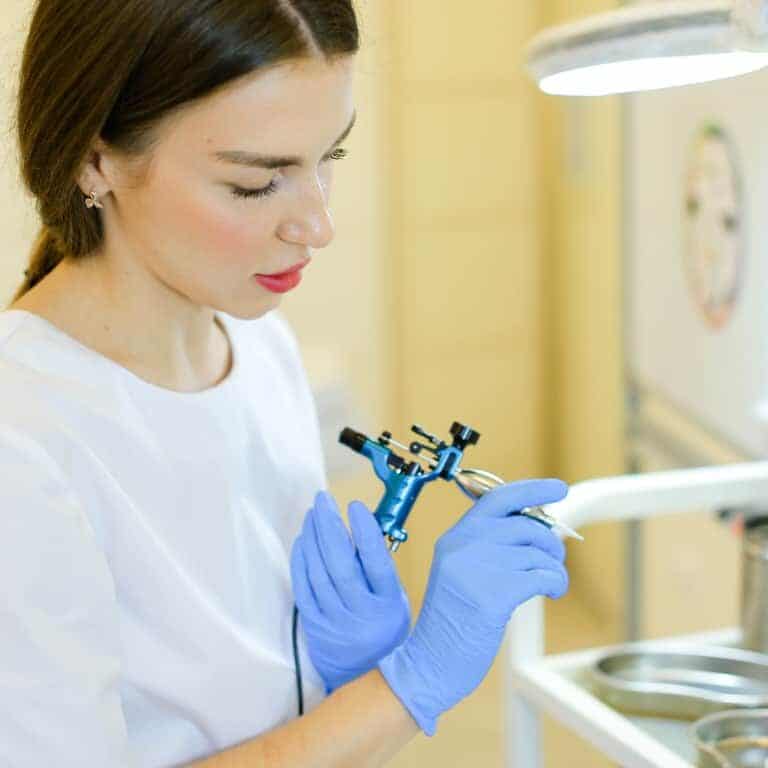
Furthermore, technicians apply for licensure before a state board, who may ask for a practical demonstration of skill and knowledge on safety and sanitation measures.
Finally, entities like The Society of Permanent Cosmetics Professionals provide certification after meeting their minimum requirement of a thousand hours of studying.
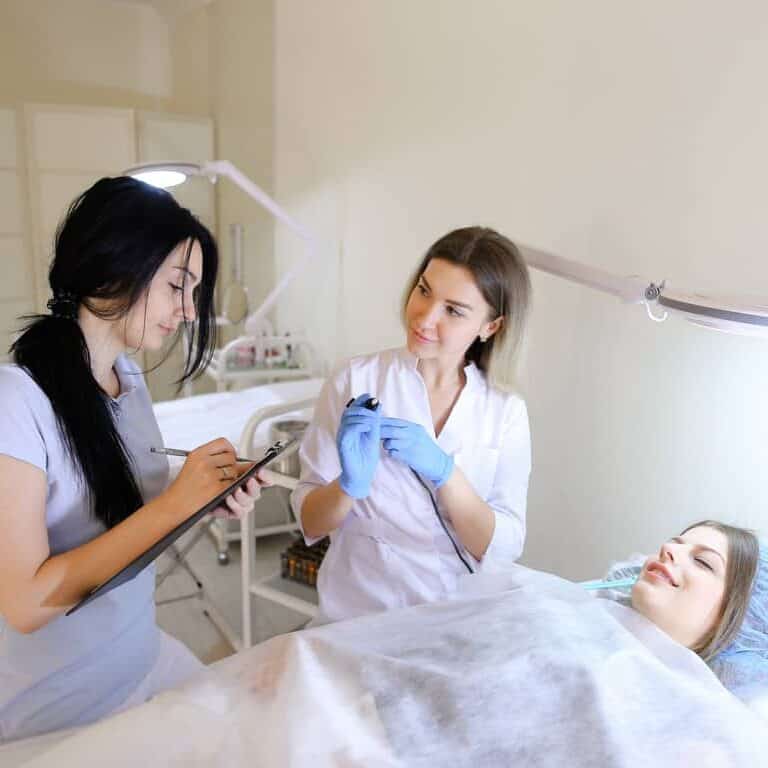
Information on other certification courses is available on the American Academy Of Micropigmentation’s website.
On the other side of the world, in Australia, several institutions such as the Melbourne College of Cosmetic Tattoo and the Australian Cosmetic Tattoo College and Microblading College find themselves at the forefront of training new technicians.
Common Cosmetic Tattoo Procedures
Microblading
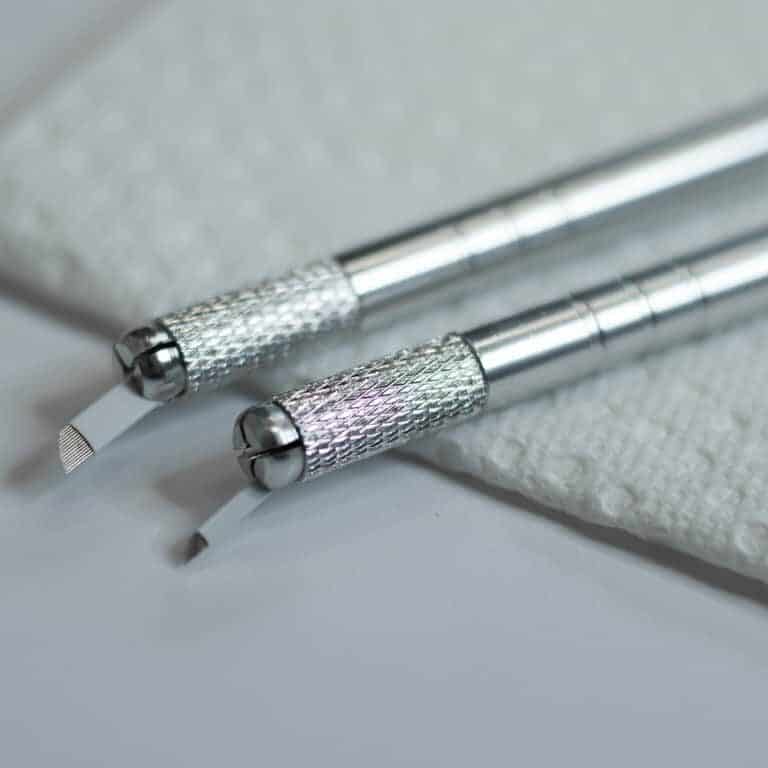
A technician aims to recreate the appearance of hair strands through this method. The goal of microblading is to give eyebrows a fuller look.
Since the area is too sensitive to use a traditional tattoo machine, the technician employs the microblade, a handheld tool capable of creating crisp, fine stroke lines by tracing through the skin with several micro-needles.
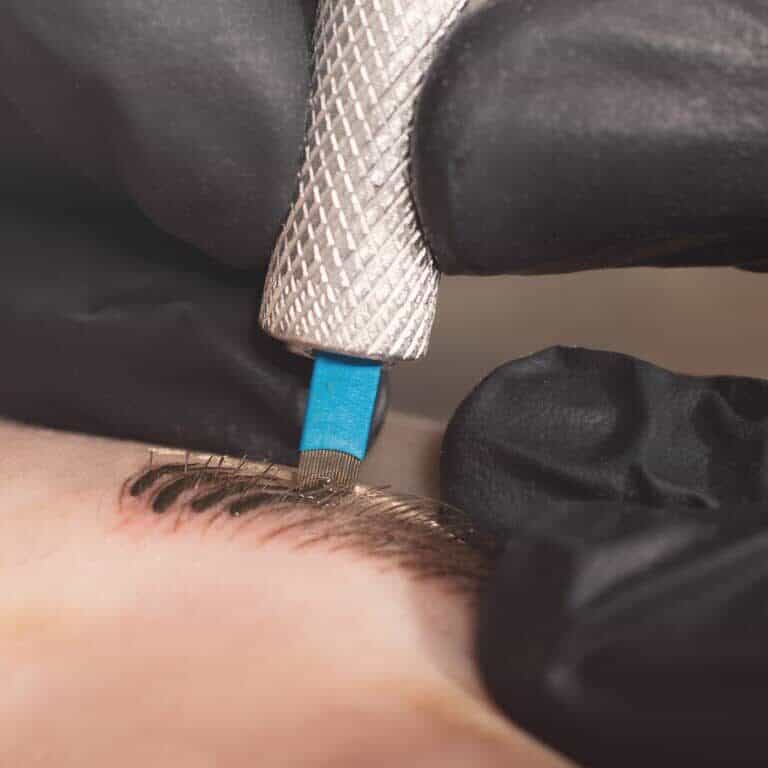
A month and a half to two months after the first session, the technician checks in with the client to correct any imperfections if necessary. Afterwards, touch ups to the cosmetic tattoo are to be expected every 12 to 18 months.
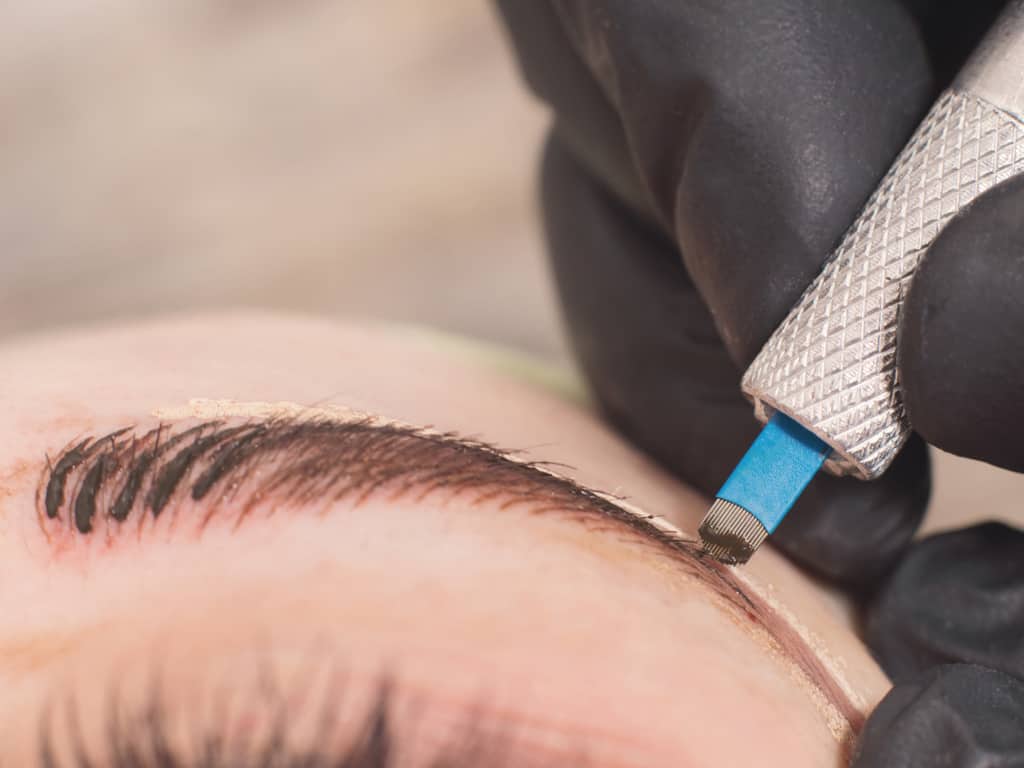
If for whatever reason the client decides against touch ups, the pigments will naturally fade away, leaving no discoloration nor scarring whatsoever.
On the other hand, those concerned with the amount of pain experienced during microblading will be glad to know it is generally less painful than traditional tattoos.
Technicians also apply a numbing ointment at the beginning of the procedure to keep the pain at bay.
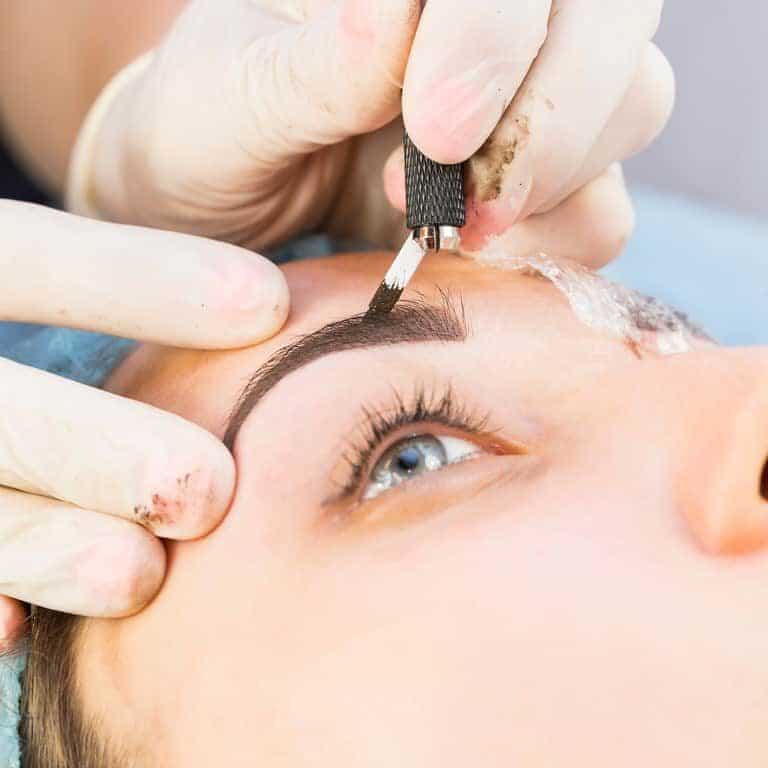
Nevertheless, microblading isn’t a good match for every type of skin. Some salons are known to turn away clients with oily skin and large pores.
In cosmetic tattoos, pigments are deposited more superficially under the skin than traditional tattoos. This raises concerns that an oily complexion won’t let the pigments set properly, resulting in an unnatural appearance and uneven lines once healed.
Scalp Micropigmentation
In this procedure, a technician distributes pigments throughout the scalp to emulate the appearance of hair follicles.
Although most might associate scalp micropigmentation with a shaved head style, the technique is also useful to simulate a fuller head of hair on balding clients.
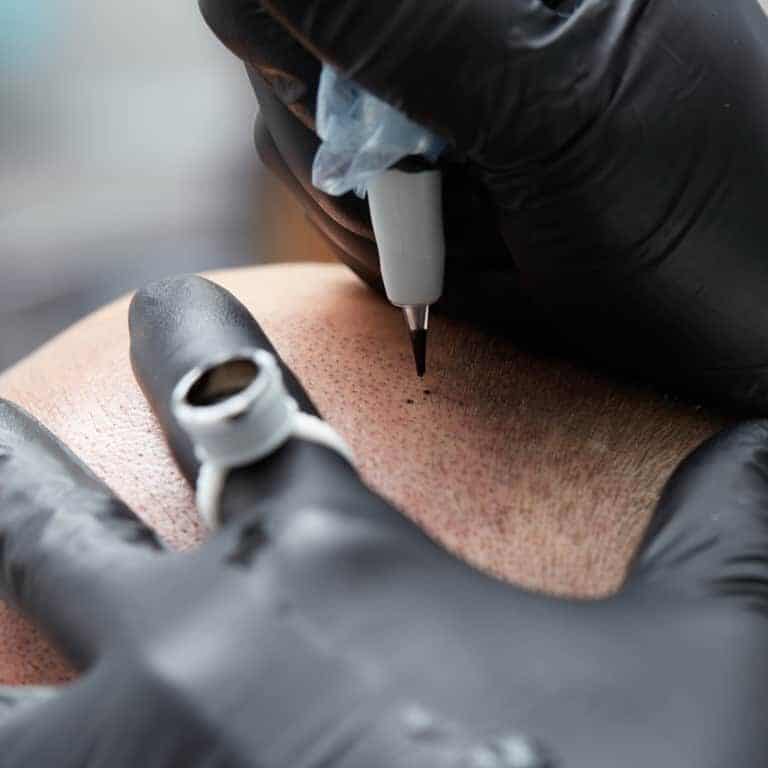
This is a cheaper and popular alternative to hair transplants and implants, both expensive treatments that can cost at least several thousands of dollars each.
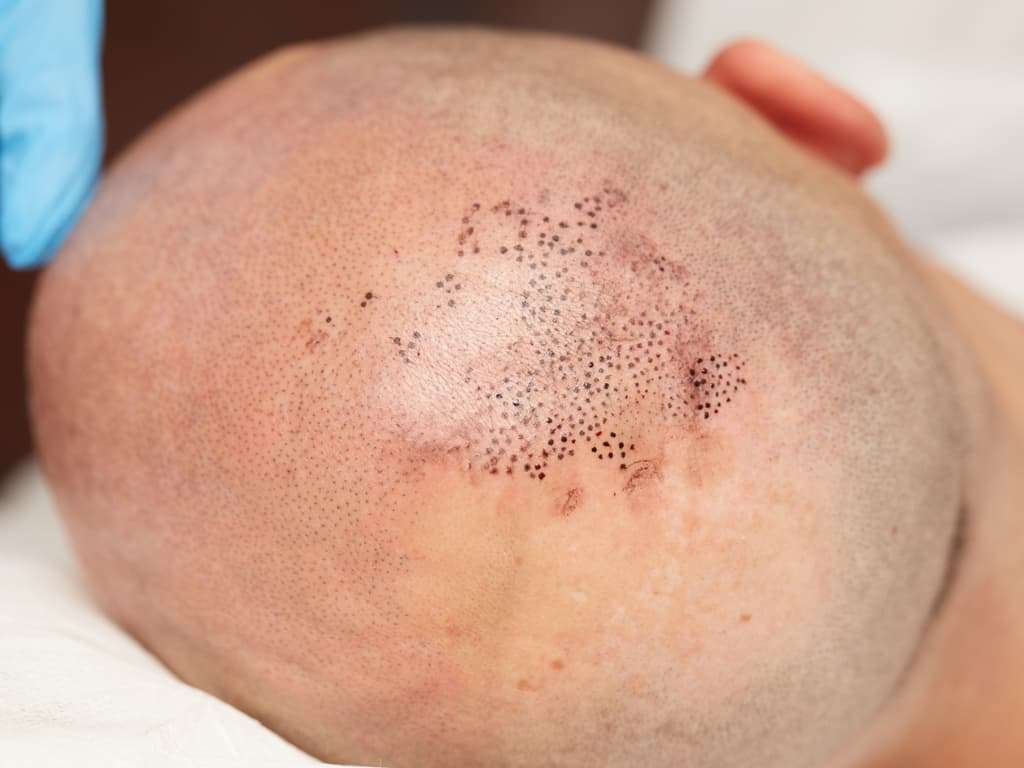
Although similar sounding to microblading, scalp micropigmentation requires a more powerful electric tattooing machine to penetrate the thicker skin of the scalp.
Professionals usually work in a pointillism style to achieve natural-looking results. With a poking manner, tattooists distribute dots of different shades and diameters of black to create depth and definition.
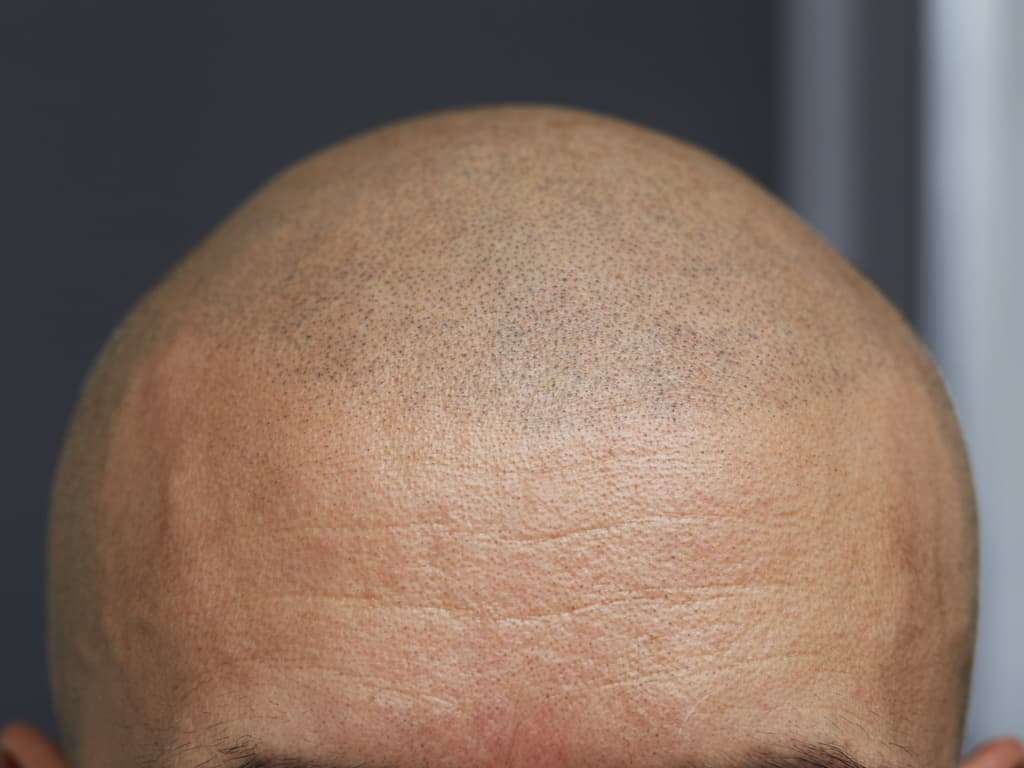
While a numbing ointment is applied to ensure the client experiences as little pain as possible, certain conditions such as acne and psoriasis can make scalp micropigmentation a difficult experience for some.
Lip Blushing
This technique consists of applying a wash of color on the lips to achieve a fuller and glossy look, as well as enhance their rosiness. It can also help correct asymmetry and even out the tone of the skin on the lips.
When it comes to this technique, subtlety is key, so you shouldn’t expect drastic changes in the long run. The color of lip blushing significantly fades after the first couple of days to a natural tone once healed.
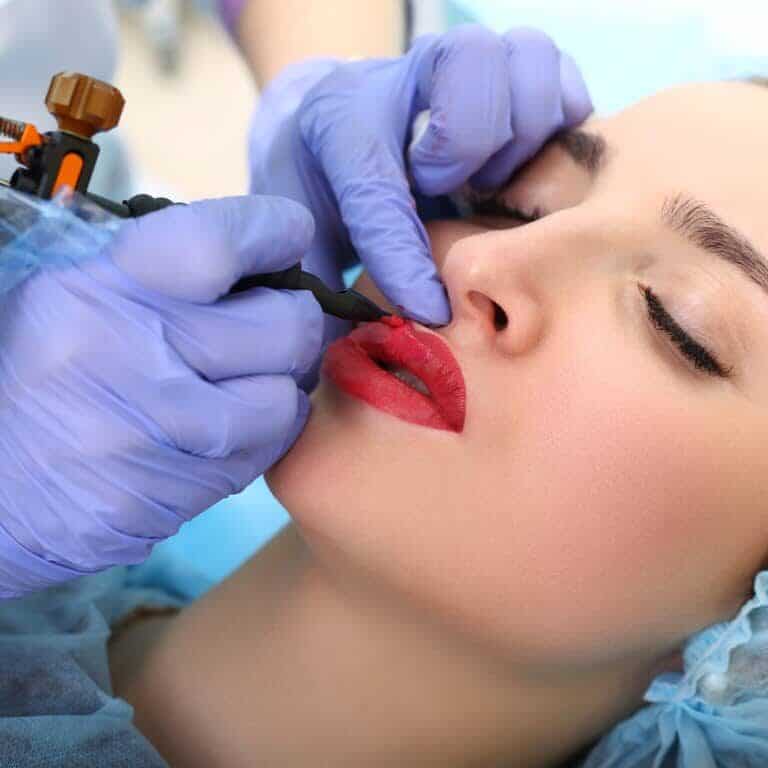
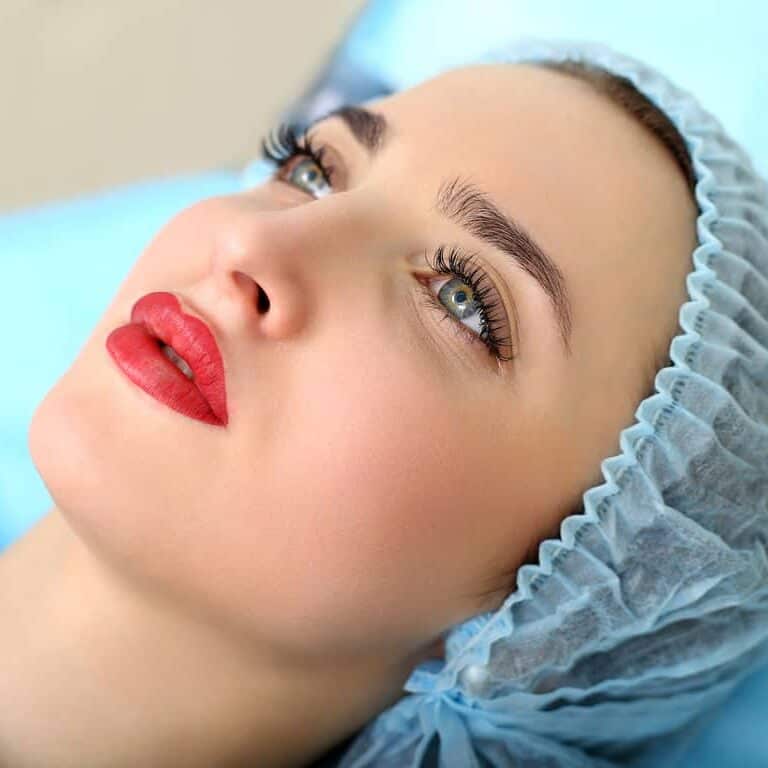

Furthermore, the skin on the lips doesn’t retain pigments well. This means a couple of touch ups will most likely be necessary before achieving the desired appearance.
Afterwards, an annual or bi-annual appointment will be necessary to maintain the cosmetic tattoo in good condition. Lifestyle choices such as smoking and exposure to the sun will also negatively affect the procedure’s longevity.
Permanent Eyeliner
Traditionally, this type of tattoo sits directly above the lash to recreate a distinctive eyeliner effect.
Another style, known as the tight line, fills within the natural lash line, giving lashes a fuller look without the unnatural appearance of a conventional eye line. Touch ups are required every 12 to 18 months.
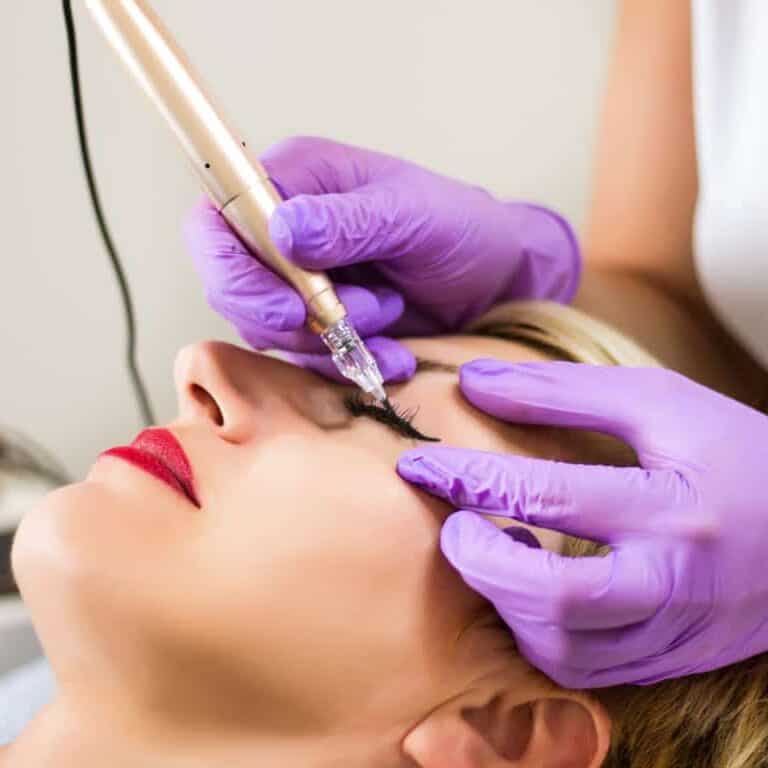
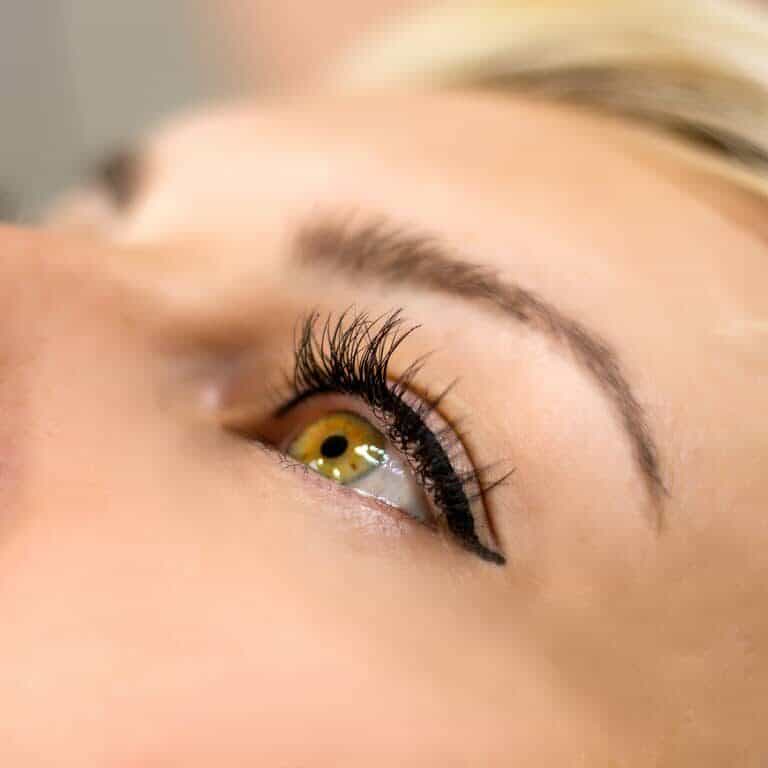
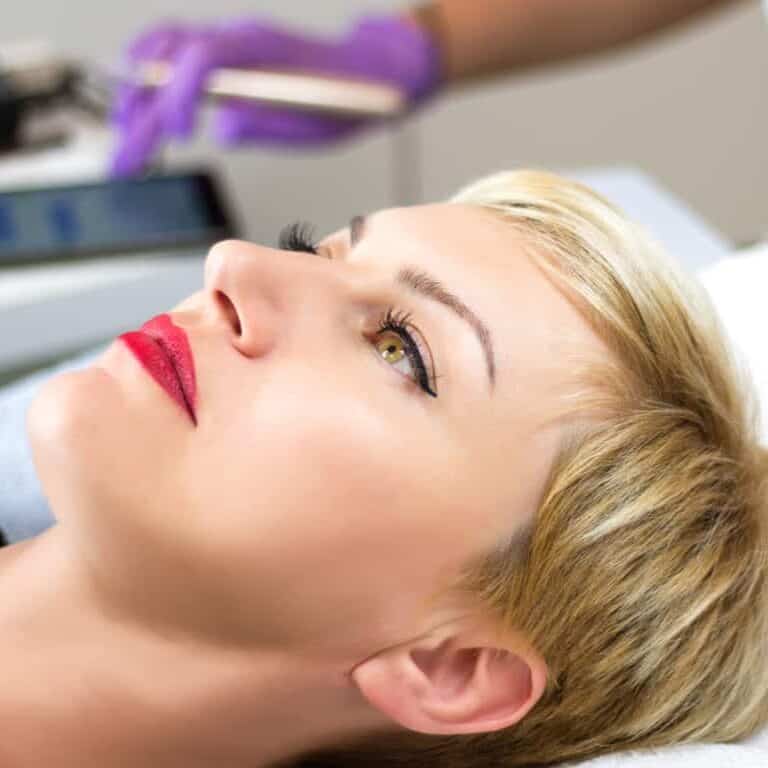
While some report higher levels of discomfort than with microblading, most clients go through the entire procedure without requiring any breaks.
However, the duration of the session will also depend on the desired eyeliner design. Although a traditional single line design can take less than an hour, more complex designs such as a ‘cat-eye’ can take several hours.
Freckle Tattoos
Many tattooists employ a single needle technique to simulate the appearance of freckles. They poke the skin sporadically across the cheekbones and on top of the nose.
Rather than using concentrated ink, the dots are made with diluted pigments to avoid dark and unnatural looking spots.
Moreover, during the healing process, the client will be unable to wear any makeup. The healing process can take up to five days.
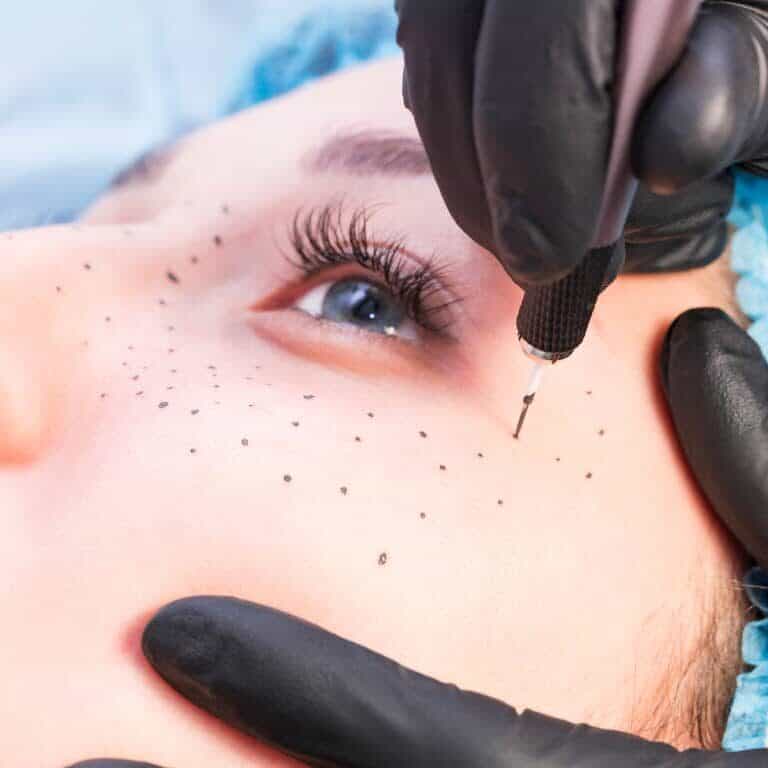
These tattoos need touch ups every one to two years. You should also take into consideration that skincare products, a necessity when it comes to the face, will also affect the longevity of your freckle tattoo.
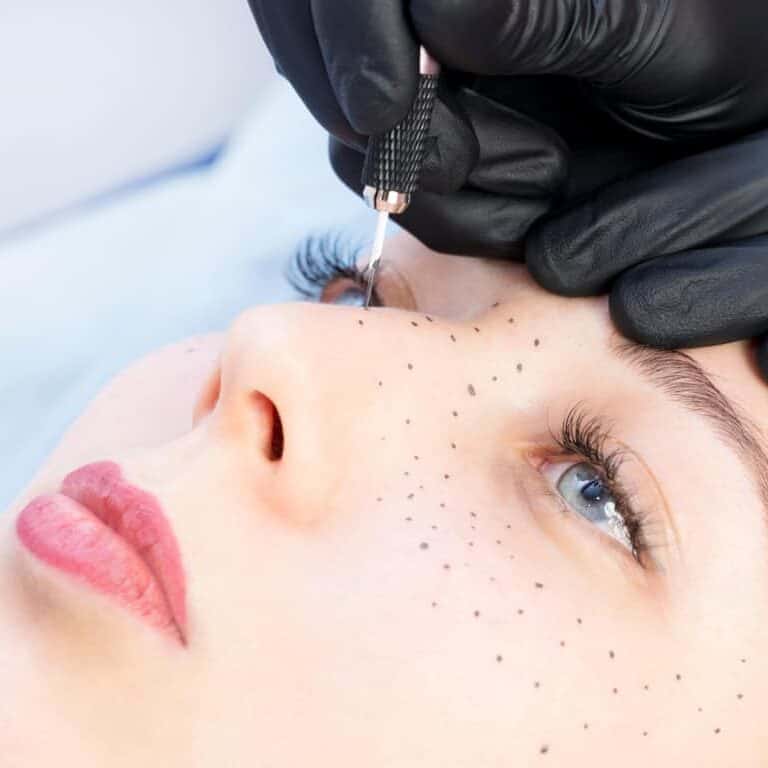
Interestingly, clients who suffer from anemia will require touch ups more frequently. After all, the system of an iron-deficient person absorbs the iron-based pigments of the ink faster.
Are Cosmetic Tattoos The Right Choice For You?
Lifestyle is one of the key aspects to take into consideration before getting any type of tattoo, and cosmetic tattoos are no different. This procedure is especially convenient for those always on the move, like athletes, entertainers, and models.
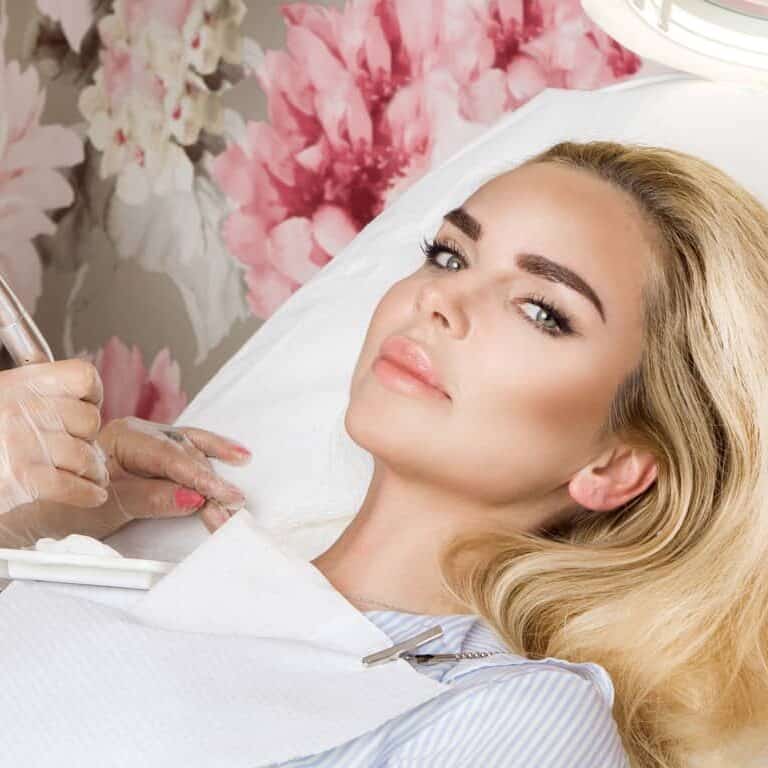
They are also ideal for businesswomen, or anyone who wants to save time while getting ready in the morning.
Permanent makeup can also be a better alternative for those prone to developing allergic reactions from using cosmetic products, although, as with any tattoo, there’s always the risk of developing infections, nodules, keloids, or swelling, and burning.
Technicians should perform a patch test before starting a cosmetic tattoo, to minimize the risk of adverse reactions. This way a professional can tell whether the client is allergic to the color pigments before working on larger areas of the skin.
Dangerous Cosmetic Tattoo Procedures
There are many taboos standing in the tattoo industry, techniques that haven’t been perfected and thus can bore unwanted results, or even in the worst-case scenario put the client’s health at risk. Blush is one of these techniques.
As mentioned before, skincare products profoundly impact the rate at which a tattoo fades. In an area such as the cheeks, the use of said products is simply unavoidable.
This means that over time, the tattoo will fade unevenly, giving way to an undesired effect that best resembles unevenly applied blush and red spots.
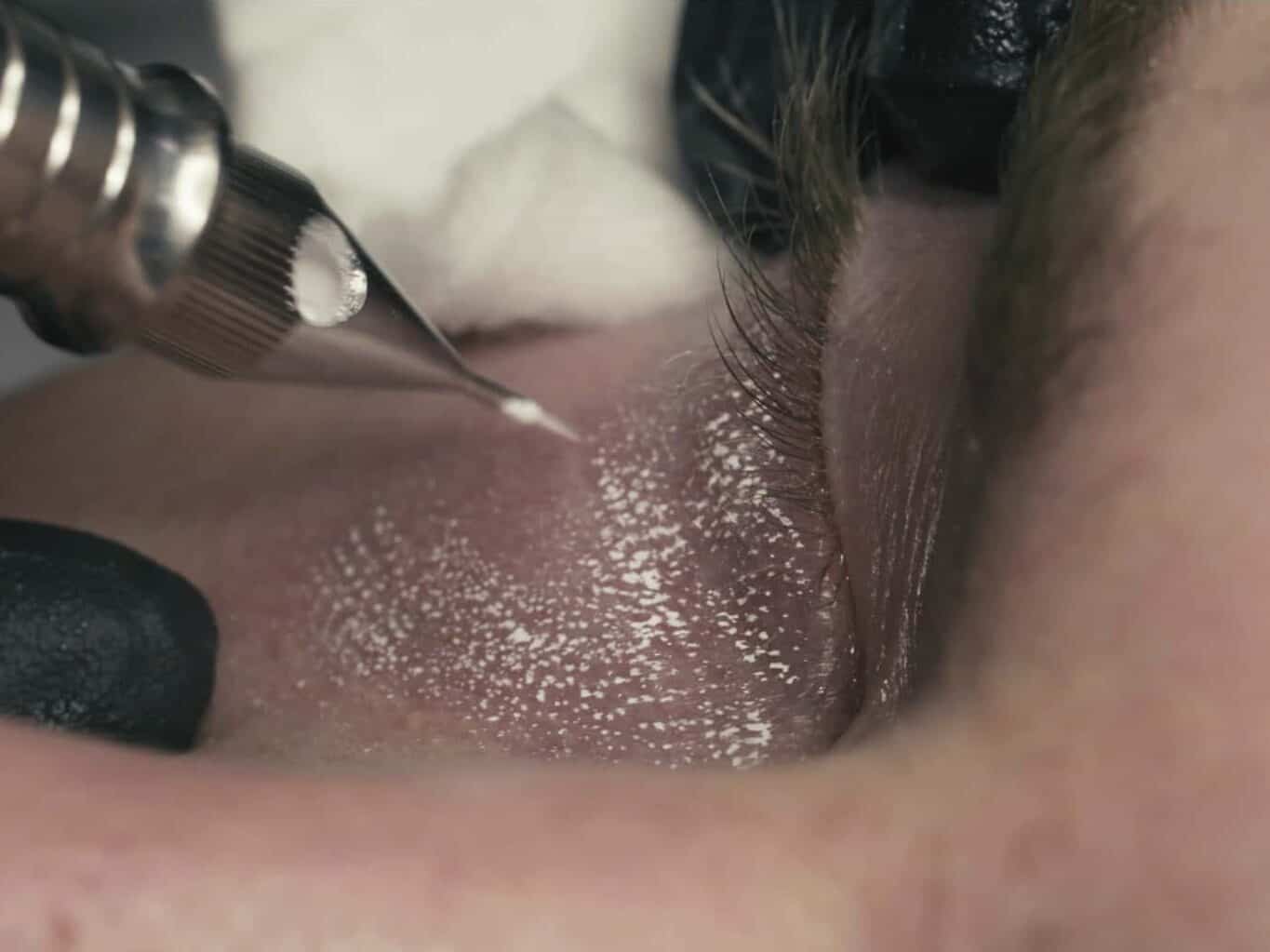
On the other hand, tattoos that cover up the dark circles under the eyes have become one of the latest tattooing trends in the last couple of years.
Experts strongly advise against this practice, however. Over time, the ink cover, no matter how diluted, will rise over the skin and discoloration may occur, leaving a pale stain.
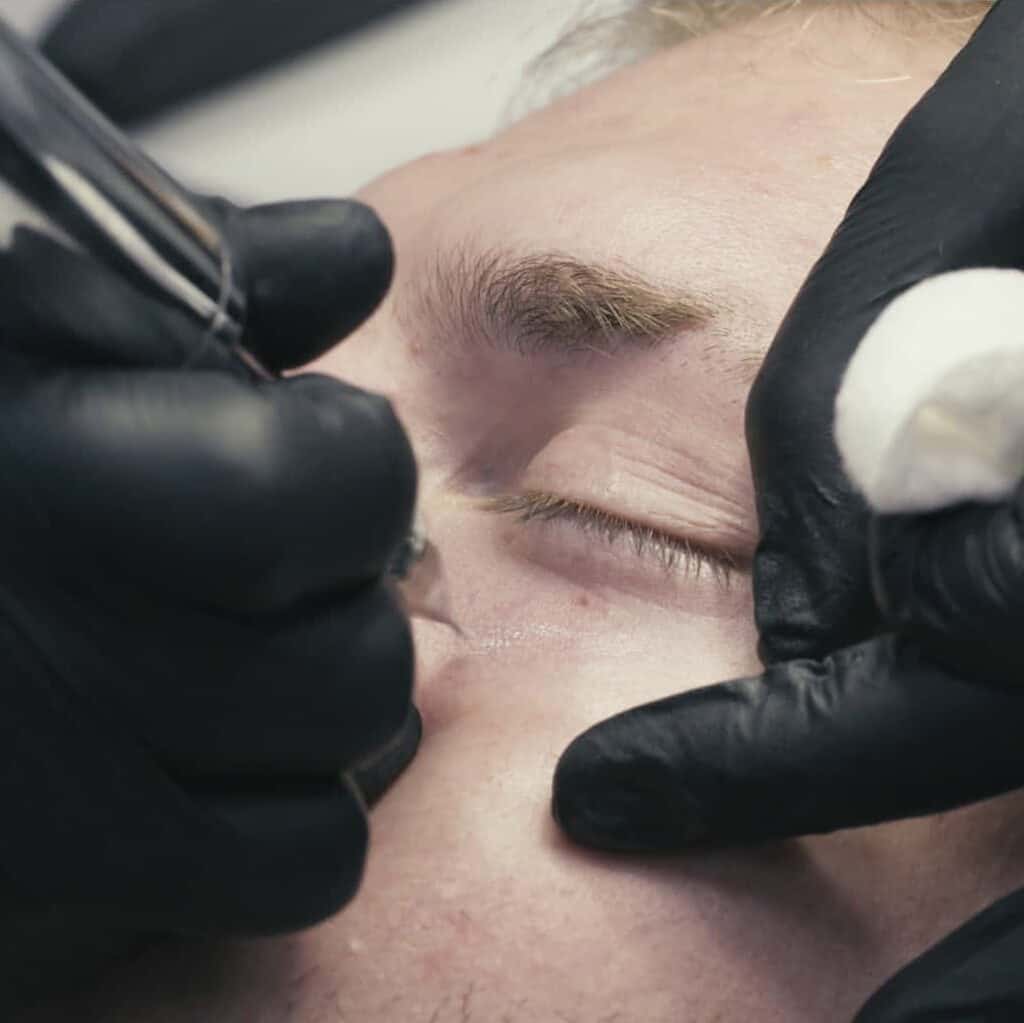
Utilizing laser removal to cover the tattoo also puts the patient at high risk. At best, the procedure will result in noticeable dark spots where the pigments were; at worst, the customer can experience blindness.
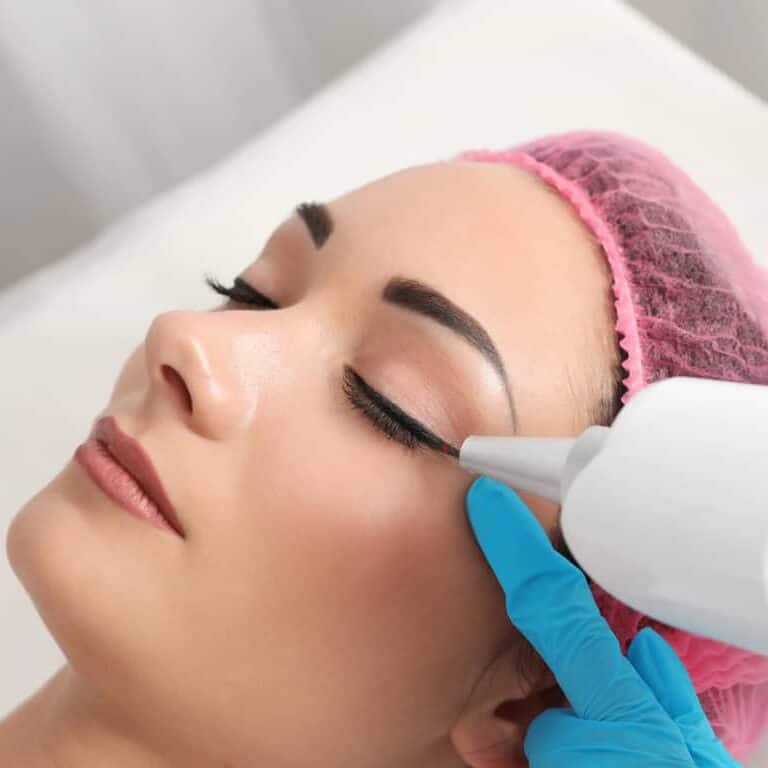
Moreover, if the tattooist were to press down too deeply on the lower eyelids, a condition known as ectropion can occur, where the eyelids sag away from the eye.
Paramedical Tattoos: A Matter of Recovery
While many have pondered whether the unstoppable growth of the beauty industry is a symptom of our self-absorbed society and obsession with unattainable standards of beauty, cosmetic tattoos are not all about glamor and good looks.
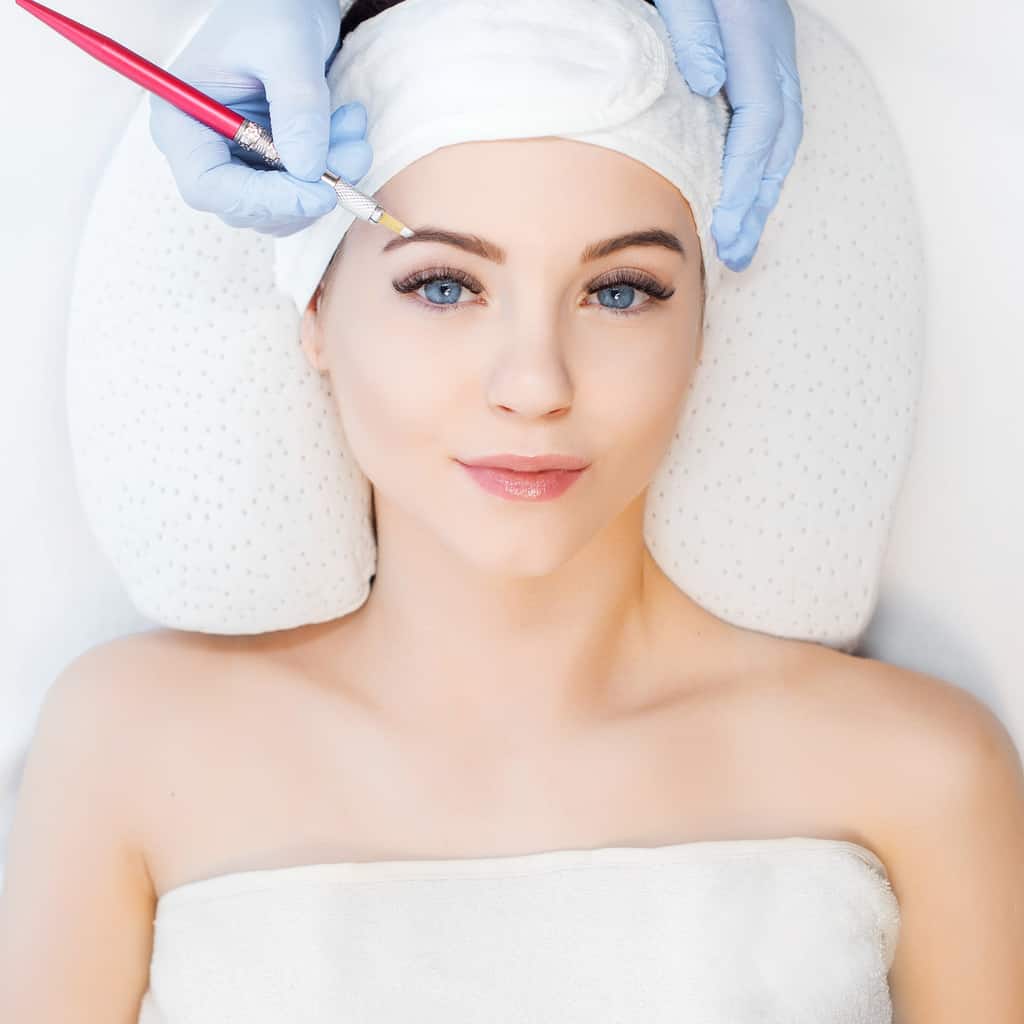
Instead of going under the knife for expensive cosmetic surgical procedures, people are turning to tattoos to help cover physical lesions at lower costs.
There’s no shortage of testimony worldwide, from breast cancer survivors getting areolas, to a construction worker who went viral online after getting a tattoo of fingernails to disguise his amputated fingers.
Tattooists also use flesh-toned ink to cover up scars, discolorations, and other imperfections.
This practice has generated such interest that there are even specific courses taught on the matter. For instance, the Academy of Advanced Cosmetics in Georgia, U.S., offers a training course that teaches artists and health professionals how to cover stretch marks, surgery scars, and discolored skin with flesh-toned pigment.
Furthermore, cosmetic tattoos can help improve the quality of life of people suffering from arthritis, Parkinson’s disease, multiple sclerosis, among other conditions resulting in tremors that make applying makeup impossible.
Visually impaired individuals can also benefit from this procedure.
Similarly, permanent eyebrow and eyeliner tattoos are popular among cancer survivors, while camouflage tattoos can help cover the skin discoloration produced by vitiligo.
Although these are not lifesaving procedures, they help in the recovery process by improving a patient’s sense of self-esteem.
All in all, you can’t overlook the advantages of cosmetic tattoos when it comes to saving time, money, and energy. Cosmetic tattoos are the perfect middle ground between traditional makeup and cosmetic surgical procedures at only a fraction of the price.

